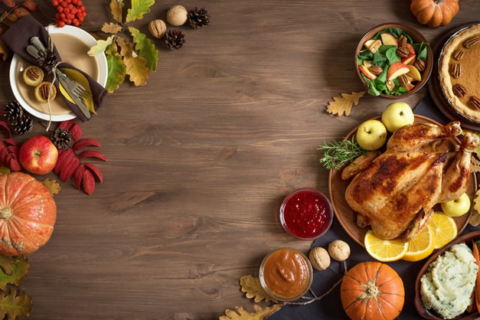How to Stop Emotional Eating Before It Starts
How to Stop Emotional Eating Before It Starts
Emotional eating — reaching for food to soothe stress, sadness, boredom, or anxiety — is one of the most common saboteurs of progress in both weight-loss and healthy-living journeys. But understanding it is the first step toward breaking the cycle.
As the Mayo Clinic notes, emotional eating often involves “turning to food for comfort — consciously or unconsciously — when facing difficult emotions.” Mayo Clinic
Below, I’ll explain why emotional eating happens, how to spot it, and evidence-backed strategies to stop it before it takes over your decisions.
Why Emotional Eating Happens
-
Emotional triggers override hunger cues. Stress, sadness, boredom, or loneliness can activate brain reward systems. Comfort foods high in sugar, fat, or salt trigger dopamine releases, reinforcing the behavior. Harvard Health+2Frontiers+2
-
Cortisol and appetite. Chronic stress elevates cortisol, which can increase appetite and cravings for energy-dense foods. Johns Hopkins notes that high stress correlates with emotional eating. Johns Hopkins Medicine
-
Habit circuitry & reward loops. Repeated use of food as emotional relief strengthens neural pathways; over time, the urge to eat becomes a go-to response. Frontiers+1
-
Emotion regulation deficits. Research shows emotional eating often ties to difficulties regulating emotions and impulse control. BioMed Central
How to Recognize Emotional vs. Physical Hunger
This is a critical step — many episodes of emotional eating begin with confusion.
| Indicator | Emotional Hunger | Physical Hunger |
|---|---|---|
| Onset | Sudden, urgent craving | Gradual, increasing over time |
| Location | Craving a specific food (ice cream, chips) | Open to various foods |
| Feelings | Driven by emotion — stress, boredom, sadness | Driven by bodily cues |
| Satisfaction | Temporary relief; craving returns | Fullness lasts and signals satisfaction |
| Mindset | Accompanied by guilt or shame | Neutral or positive |
HelpGuide.org emphasizes learning this difference as a foundational step in managing emotional eating. HelpGuide.org
Also, some people turn to food not because of hunger but because they feel unsettled — as Mount Sinai explains, emotional eating “has nothing to do with hunger.” Mount Sinai Health System
Steps to Stop Emotional Eating (Before It Starts)
Here are actionable strategies that mental health professionals and behavioral researchers recommend:
1. Build Awareness (Without Judgment)
Notice the urge before it becomes action. Write down what you feel (anger, loneliness, stress) before reaching for food. Acknowledge: “I’m not physically hungry; I’m feeling X.” This pause gives you choice.
— Dietitians recommend recognizing behavior without shame as a first step. Houston Methodist
2. Map Your Triggers
Track not just what you eat, but when, where, and why. Over time, patterns emerge. Kaiser Permanente advises asking yourself whether you’re using food to cope. Kaiser Permanente
3. Use Alternative Coping Mechanisms
-
Deep breathing or a 2- or 5-minute breathing exercise
-
Go for a walk or change scenery
-
Write in a journal or call a friend
-
Engage in a hobby or creative outlet
PeaceHealth lists five coping skills to disrupt emotional eating in the moment. PeaceHealth
4. Delay — Practice “Urge Surfing”
When the urge hits, delay action. Tell yourself you’ll wait 10 minutes. During that time, you might see the urge fade. This technique, known as “urge surfing,” is used in behavioral therapies to allow emotions and impulses to pass without acting.Positive Psychology
5. Nourish Yourself Strategically
Eat balanced meals with protein, fiber, and healthy fats. This helps stabilize blood sugar and reduce peaks in hunger and cravings. Johns Hopkins notes that chronic stress plus a disbalanced diet often fuel emotional eating. Johns Hopkins Medicine
6. Seek Professional Support if Needed
If emotional eating feels overwhelming, therapy—especially approaches like CBT, Acceptance and Commitment Therapy (ACT), or Cognitive Emotional Behavioral Therapy (CEBT)—can help you address underlying emotional regulation issues. Wikipedia+1
Cleveland Clinic’s psychologist Dr. Susan Albers, for instance, discusses strategies for managing emotional eating as part of therapy. Cleveland Clinic
Real-Life Example (from ELITE Alliance clients)
One client, “Maria,” used to turn to ice cream every night after work. She felt stressed, overwhelmed, and just wanted comfort. Together, we started a small “pause-and-choose” routine:
-
When she craved ice cream, she paused and asked: “Am I physically hungry, or am I stressed?”
-
She kept a short list of coping tools (walk, text friend, deep breaths)
-
Over weeks, her nightly ice cream habit faded as she practiced replacing the craving with a walk or journaling
Her food cravings didn’t vanish overnight — but her awareness and toolbox grew stronger.
Final Thoughts
Emotional eating doesn’t have to control you. With awareness, alternative coping skills, and consistent practice, you can learn to interrupt the cycle before it begins.
At ELITE Fitness Alliance, we support not just your body, but your mindset and behaviors—because lasting change begins inside.
If emotional eating or nutrition feels overwhelming, book a free consultation
Visit us at elitefitnessalliance.com.



